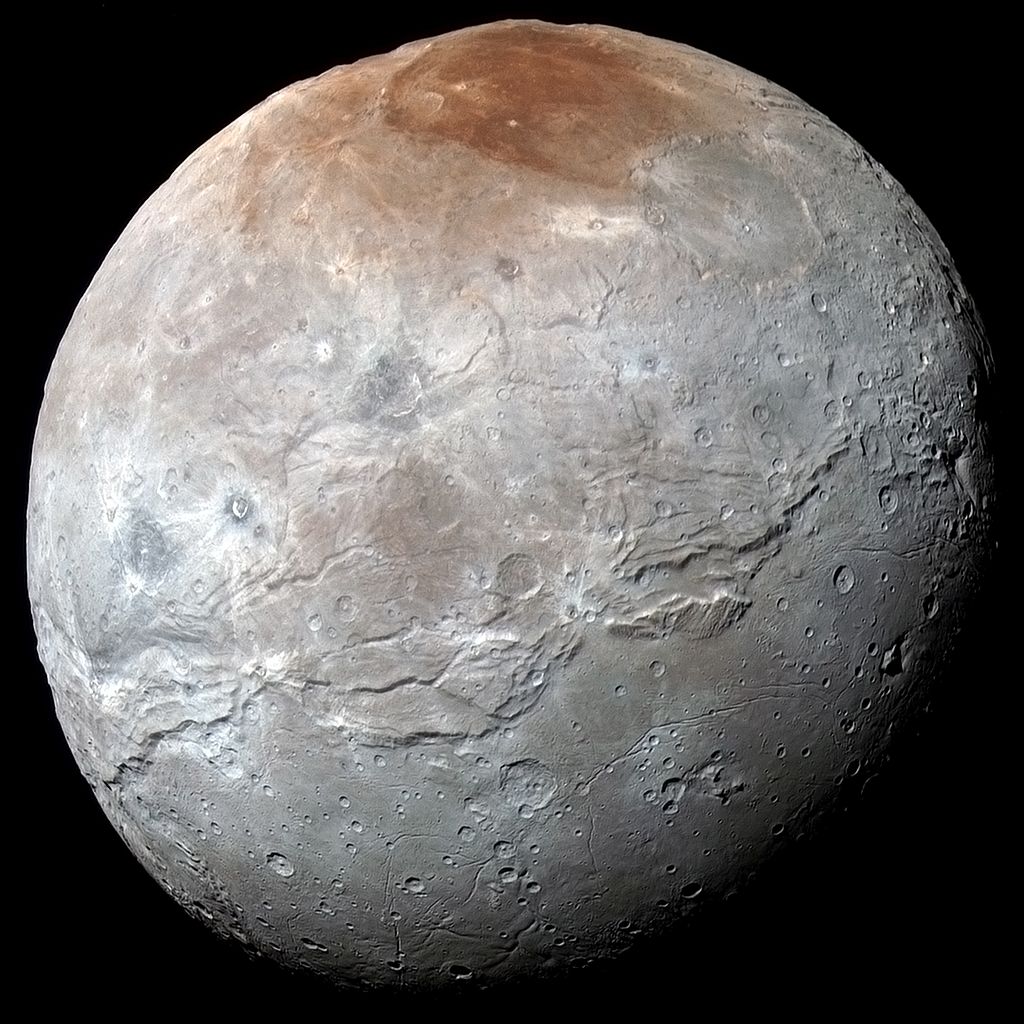A team of astronomers from the Southwest Research Institute (SwRI) has published the results of a study aimed at determining the origin of the system of giant canyons on the surface of Charon. Scientists came to the conclusion that they were formed as a result of freezing of the subsurface ocean of the moon.

In 2015, the New Horizons probe made a flyby of Pluto. Its images of the dwarf planet amazed both scientists and the general public. But in addition to Pluto, the probe also photographed its moons, including Charon. The images showed a very unusual picture. It turns out that Charon has a huge canyon system that stretches along its equator. Its total length is at least 1000 km, and its depth reaches 9 km, which allows it to compete with the famous Valles Marineris on Mars and ledges on Miranda. New Horizons also revealed signs of past cryovolcanic activity on Charon.
The Charon canyons are of great interest to the scientific community. It had been suggested that they could have arisen as a result of the freezing of the ocean, which was once hidden in its depths. A team of researchers from SwRI decided to test this assumption by creating a new model of the internal structure of the moon.
Modeling has confirmed that the most likely scenario of the origin of the canyons is indeed the rupture of the icy crust of Charon caused by the freezing of its subsurface ocean. Most likely, this happened at an early stage of the moon’s existence. The ocean remained liquid due to the heat released during the tidal interactions of Charon and Pluto. However, after their rotation synchronized, and the orbit became circular (and this happened in the first millions of years), tidal interactions stopped. The researchers’ calculations also suggest that the composition of the ocean (for example, the presence of a large amount of salts or ammonia in it) should not have had a strong effect on the rate of its freezing.
The researchers also investigated the assumption that Charon’s cryovolcanic activity was caused by emissions of matter from cracks that connected its surface to the ocean. The simulation showed that this could be possible only if the thickness of the ice crust did not exceed 10 km. However, the data available to scientists suggested that this figure was about 100 km. So we are talking about some other mechanism for generating emissions.
You can also read our selection of the 12 most interesting facts about Pluto.
According to https://www.sciencedirect.com
Follow us on Twitter to get the most interesting space news in time
https://twitter.com/ust_magazine

